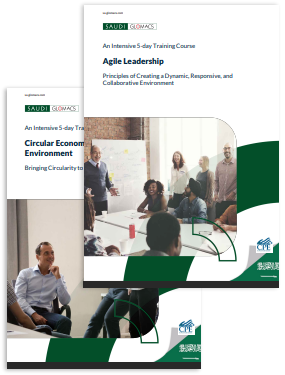An Interactive 5-Day Training Course
Offshore Wind Energy Deep Dive
Understanding Important Technical Concepts of
Offshore Wind Energy Production
Course Overview
This is a technical training course that will guide you through everything you need to know to make sense of the challenges and opportunities within the offshore wind energy world. Starting with the basics and gradually diving into the more complex technical topics related to offshore wind farms.
Participants will gain a detailed understanding of the fundamental principles and components of offshore wind energy systems, as well as the skills required to design them. The delegates of Offshore Wind Energy Deep Dive training course will also learn to identify and manage risks associated with offshore wind energy projects, as well as identify mitigation measures to minimize those risks.
This GLOMACS Offshore Wind Energy Deep Dive training course will highlight:
- Measuring the offshore wind: meteorological platforms and floating LiDAR systems
- Offshore wind turbine technology: fixed-bottom and floating turbines
- Metocean and seabed data assessment
- Offshore wind farm layout design and optimization
- Offshore wind farm economics and financing
- Risk assessment and mitigation measures for offshore wind energy systems
Training Outline
DAY 1: Introduction and Fundamentals of Offshore Wind Energy
- Overview of the current state of offshore wind energy
- Comparison of offshore wind energy with other energy sources
- Accumulated global offshore wind capacity evolution over time
- Where are the offshore wind farms located?
- Introduction to the main components of offshore wind energy systems
- The basic components of offshore wind turbines
- Highest still water level (HSWL), maximum individual wave height (Hmax50) and additional water levels definitions
DAY 2: Offshore Wind Data, Metocean Data, and Measurement Systems
- Offshore wind resource measurement platforms (FINO 2 success case)
- Floating light detection and ranging systems (FLiDAR or FLS)
- Global bathymetry data and seabed data
- Mesoscale offshore wind resource grids from numerical weather predictions (NWP)
- Techniques for measuring and analyzing offshore wind energy resources
- The importance of accurate resource assessment for successful offshore wind projects
- Data collection and interpretation techniques for offshore wind energy
DAY 3: Offshore Wind Turbines, Wind Farm Design and Energy Production Assessment
- Fixed-bottom vs floating wind turbine technologies
- Turbine blades, rotors, gearboxes, generators, and other components
- Installation and maintenance of offshore wind turbines
- Site selection and characterization for offshore wind farms
- The processes of designing and optimizing offshore wind farm layouts
- Long cluster-to-cluster offshore wakes
- Annual energy production (AEP) calculation
- Uncertainty factors and exceedance probabilities related to the energy production forecasts
DAY 4: Environmental Impacts, Operations and Maintenance of Offshore Wind Farms
- Offshore wind farm economics and financing
- Calculating the levelized cost of energy (LCoE)
- Environmental impact assessment and mitigation measures
- Overview of offshore wind farm operations and maintenance
- Types of maintenance and inspection procedures for offshore wind turbines and components
- Risk assessment and mitigation measures for offshore wind energy systems
- Health and safety considerations for offshore wind farm workers
DAY 5: Advanced Topics in Offshore Wind Energy and Conclusion
- Emerging trends in offshore wind energy technology and research
- Future prospects for offshore wind energy development
- Where will the wind farms of tomorrow be located?
- Successful offshore wind projects
- Discussion of future directions in offshore wind energy
Certificates
- On successful completion of this training course, GLOMACS Certificate will be awarded to the delegates
- Continuing Professional Education credits (CPE) : In accordance with the standards of the National Registry of CPE Sponsor, one CPE credit is granted per 50 minutes of attendance
Accreditation

GLOMACS is registered with NASBA as a sponsor of Continuing Professional Education (CPE) on the National Registry of CPE Sponsors. NASBA have final authority on the acceptance of individual courses for CPE credit. Complaints regarding registered sponsors may be submitted to the National Registry of CPE Sponsors through its website: www.learningmarket.org.
All Training Seminars delivered by GLOMACS by default are eligible for CPE Credit.


About Saudi Glomacs
At Saudi GLOMACS, we specialize in delivering world-class training courses in Saudi Arabia and across various international locations. Our training courses are tailored to meet the unique demands of Saudi Vision 2030 and the Human Capability Development Program, focusing on empowering Saudi citizens and enhancing workforce skills. We offer diverse courses spanning leadership, management, engineering, and technical disciplines to cultivate expertise and drive professional growth. Our flexible learning options—whether in-person, online, or in-house—ensure accessibility and convenience for individuals and organizations alike.
With over 30+ years of experience through the GLOMACS global network, we are committed to delivering innovative, results-driven training solutions. Our expert instructors combine industry knowledge with dynamic teaching methods, fostering practical skill development and long-term career success. By choosing Saudi GLOMACS, you're investing in personal excellence and contributing to the Kingdom’s sustainable economic growth and vision-driven transformation.
What do you need to learn next?
Check our list of courses or let us customize a course for you.
View courses



